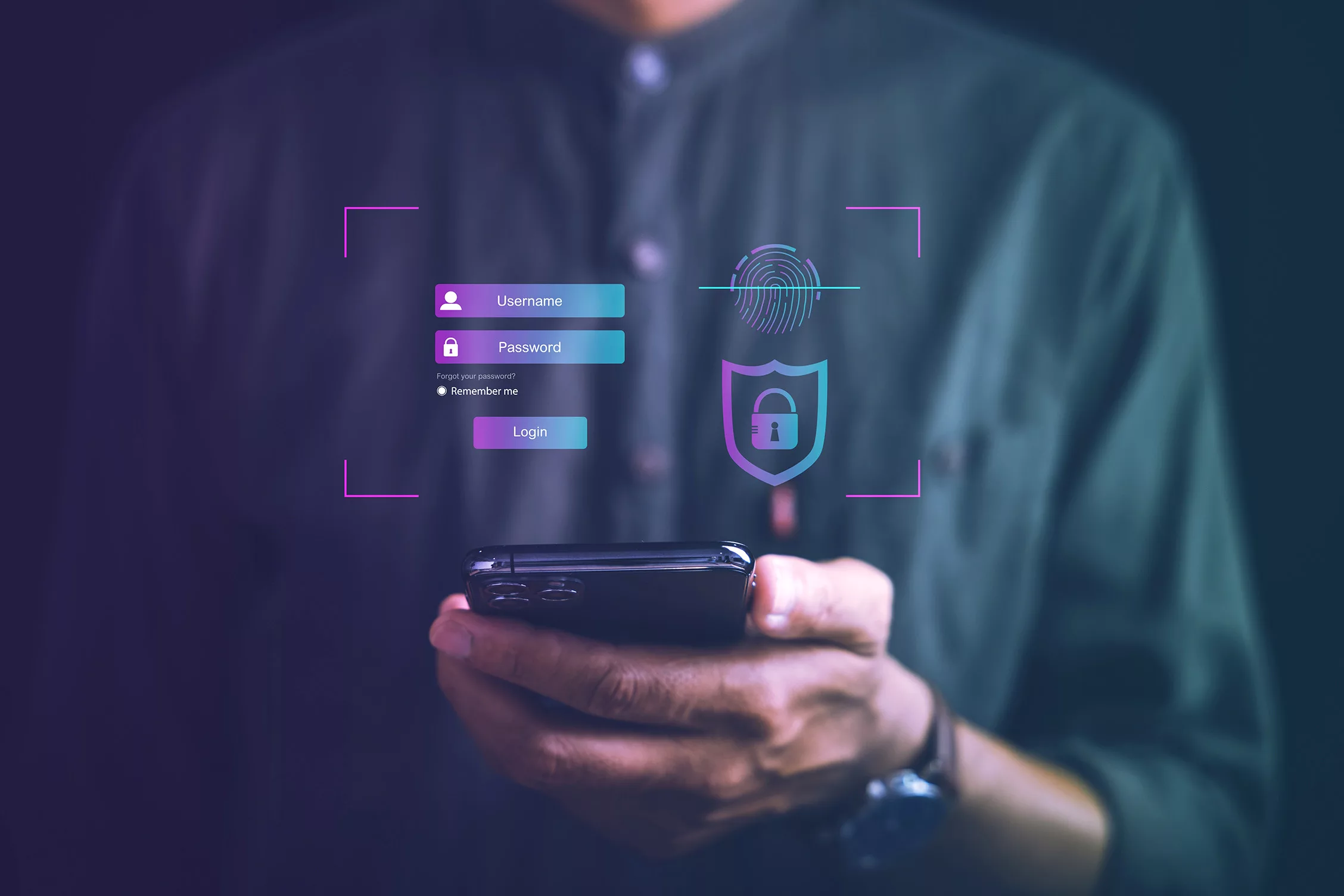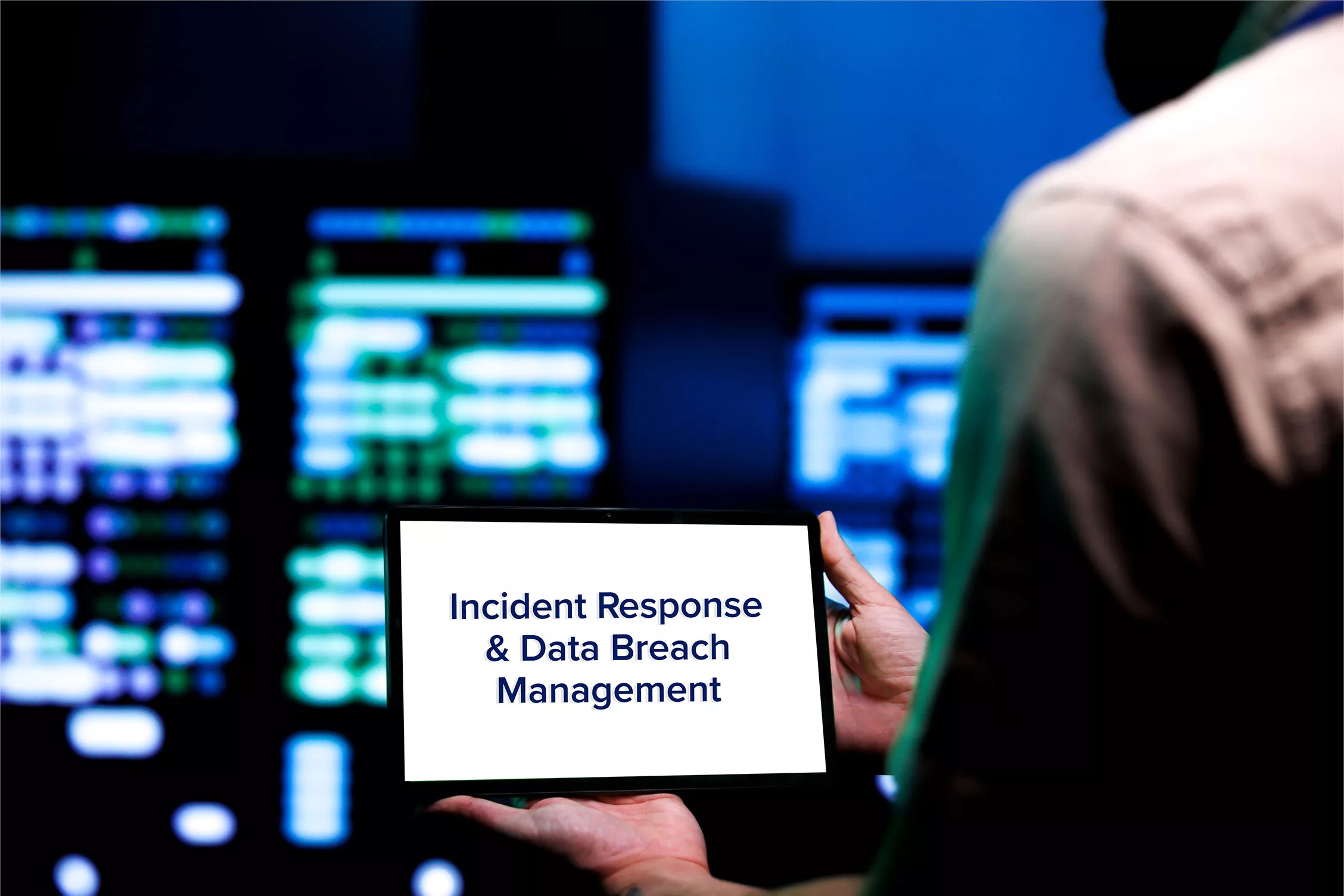It has been found that a whopping 91% of iOS apps and 95% of Android apps encounter security vulnerabilities. These numbers highlight a crucial need for developers to learn and apply the basics of mobile app security.
In this guide, we’ll break down the essential principles and best practices that form the foundation of strong mobile app security. As mobile applications become more prevalent, you must take steps to shield their creations from potential threats.
So, without further ado, let’s get started.
Authentication and Authorization in Mobile App Security

Employing robust practices in Authentication and authorization is essential for building the best mobile app security. Let’s explore the role of mobile app security testing tools and mobile phone security apps.
Secure Authentication Mechanisms
Authentication is the process of verifying the identity of users and preventing unauthorized access. Implement strong password policies, encouraging users to create complex passwords. Consider incorporating multi-factor authentication (MFA), requiring users to provide additional verification, such as a code sent to their mobile devices. This adds an extra layer of protection, a crucial aspect of mobile app security best practices.
Authorization Protocols
Authorization determines the actions authenticated users are allowed to perform within an application. Follow mobile app security best practices in defining and enforcing proper authorization protocols. Implement role-based access control (RBAC) to ensure that users only have access to the functionalities relevant to their roles. Regularly review and update authorization settings to align with changing requirements.
Integration of Mobile App Security Testing Tools
To ensure the effectiveness of authentication and authorization mechanisms, integrate reputable mobile app security testing tools into your development and testing processes. These tools identify vulnerabilities and weaknesses in your authentication and authorization implementations, allowing for proactive remediation before your app goes live.
Best Mobile App Security Practices for Session Management
Proper session management is vital for maintaining a secure user environment. Implement secure session handling mechanisms, such as session timeout and secure session token storage. Regularly audit and monitor active sessions to detect and mitigate any suspicious activity promptly. These practices are fundamental to the overall success of your mobile app security strategy.
Mobile Phone Security Apps for Enhanced Authentication
Encourage users to enhance their own security by utilizing reliable mobile phone security apps. Biometric authentication, such as fingerprint or facial recognition, adds an extra layer of convenience and security. Collaborate with reputable mobile phone security app providers to ensure compatibility and a seamless user experience.
Continuous Monitoring and Analysis
Authentication and authorization systems should be continuously monitored. Implement real-time alerting for suspicious activities or multiple failed login attempts. Regularly analyze access logs to identify patterns that might indicate a potential security threat. By adopting these mobile app security best practices, you can swiftly respond to any emerging issues.
User Education and Communication
Regularly communicate with users about the necessity of protecting their login credentials and the benefits of enabling additional security features like MFA. User awareness is a powerful component of an effective mobile app security strategy.
Securing APIs

APIs are the communication bridge between different software components, making them a critical focal point for potential vulnerabilities. Let’s explore key considerations and strategies for bolstering mobile app API security while adhering to established mobile app security standards and leveraging comprehensive checklists.
API Authentication and Authorization
Ensuring the security of your APIs begins with robust authentication and authorization practices. Implement strong authentication mechanisms, such as tokens or API keys, to validate the identity of entities interacting with your APIs. Additionally, enforce proper authorization protocols to ensure that only authorized users or systems have access to specific resources. Adhering to established mobile app API security standards in this regard establishes a foundational layer of protection.
Input Validation for API Requests
Rigorous input validation prevents injection attacks and maintains data integrity. Regularly audit and update input validation procedures to align with evolving security standards. By scrutinizing and validating incoming API requests effectively, you minimize the risk of malicious entities exploiting vulnerabilities through manipulated data inputs.
API Security Standards and Compliance
Familiarize yourself with industry-recognized mobile app security standards applicable to APIs, such as OAuth and OpenID Connect. Adhering to these standards ensures a level of consistency and compatibility with broader security practices. Regularly review and update your API security protocols to stay compliant with emerging standards and regulatory requirements.
Mobile App Security Checklist for APIs
Developing and following a comprehensive mobile app security checklist specific to APIs is essential. This checklist should encompass various security aspects, including encryption, secure communication channels, and proper data storage practices. Regularly updating the checklist ensures that your API security measures align with evolving industry best practices and security considerations.
Monitoring and Logging
Implementing robust monitoring and logging mechanisms for API activities is a proactive measure against potential security threats. Regularly review logs to identify any unusual patterns or suspicious activities. Effective monitoring provides real-time insights, allowing your team to respond promptly to security incidents and mitigate potential risks.
Rate Limiting and Throttling
To prevent abuse or misuse of your APIs, enforce rate limiting and throttling mechanisms. Adjust these limits based on evolving usage patterns and potential threats. These measures not only protect your resources but also contribute to a more reliable and efficient API ecosystem by ensuring fair and controlled access.
Regular Security Audits
Conducting regular security audits focused specifically on API security is crucial. Utilize automated tools and manual assessments to identify and rectify vulnerabilities. Regular audits provide an opportunity to enhance your API security posture, addressing potential weaknesses and staying ahead of emerging threats.
Collaboration with Third-Party APIs
If your mobile app integrates with third-party APIs, ensure that these external interfaces adhere to similar security standards. Regularly review and update the integration to address any changes or potential security risks from third-party APIs. This collaborative approach ensures a cohesive and secure ecosystem for data exchange and functionality.
Education and Training
Empower your development team with knowledge about mobile app API security best practices through education and ongoing training. Stay proactive in providing updates on emerging security standards and potential threats. A well-informed team is better equipped to implement and maintain effective API security measures throughout the development lifecycle.
Mobile App Testing and QA

Quality assurance (QA) and testing address the critical aspect of your mobile app security. Implementing thorough testing methodologies ensures that your mobile app is resilient against potential vulnerabilities. Let’s explore key considerations for conducting effective mobile app security testing to shield your application against potential risks.
Comprehensive Security Testing
Incorporate mobile app security testing into your overall QA strategy. Comprehensive security testing involves assessing your application for vulnerabilities and weaknesses that could be exploited by malicious entities. This process encompasses various testing types, including penetration testing, security scanning, and code reviews.
Automated vs. Manual Testing
Strike a balance between automated and manual testing approaches. Automated testing tools provide efficiency and speed in identifying common security issues, while manual testing allows for a more nuanced examination of potential vulnerabilities. Combining both approaches ensures a more thorough evaluation of your app’s security posture.
Penetration Testing and Vulnerability Assessments
Conduct regular penetration testing to simulate real-world attacks on your mobile app. Vulnerability assessments help identify and prioritize potential weaknesses. Integrating these practices allows your team to proactively address vulnerabilities before the app is deployed, contributing to a more secure final product.
Code Reviews and Static Analysis
Implementing code reviews and static analysis as part of your testing process identify security flaws in the early stages of your development. This proactive approach helps catch potential vulnerabilities before they become ingrained in the codebase, reducing the overall risk to your mobile app’s security.
Dynamic Application Security Testing (DAST)
Utilize dynamic application security testing to evaluate your app in a runtime environment. DAST tools simulate real-world scenarios, identifying vulnerabilities that may not be apparent in a controlled testing environment. Integrating DAST into your testing regimen provides a holistic perspective on your mobile app’s security.
Security Mobile App Checklist
Develop and adhere to a comprehensive security mobile app checklist for testing. This checklist should include items such as encryption standards, secure data storage, and authentication protocols. Regularly updating and expanding this checklist ensures that your testing efforts align with evolving security best practices.
Integration of Security Testing Tools
Leverage specialized mobile app security testing tools that cater specifically to identifying vulnerabilities in mobile applications. These tools automate the testing process, helping identify and rectify security issues efficiently. Regularly update and upgrade these tools to stay ahead of emerging threats.
User Data Protection Testing
Prioritize testing mechanisms that focus on protecting user data. This includes encryption of sensitive information, secure transmission protocols, and secure storage practices. Conducting thorough tests in these areas ensures that user privacy and data security are paramount in your mobile app.
Keeping Software Dependencies Secure

Comprehensive mobile app security management practices, particularly in relation to software dependencies, fortify the overall security posture of finance apps. Let’s explore how to keep software dependencies secure in financial mobile applications.
Dependency Scanning Tools
Incorporate robust dependency scanning tools into your mobile app security management strategy. These tools help identify vulnerabilities within third-party libraries and components, ensuring that potential security risks are promptly addressed. Regularly scan and update dependencies to mitigate emerging threats and vulnerabilities.
Regular Updates and Patches
Keep software dependencies up to date by applying regular updates and patches. Timely updates address known vulnerabilities, reducing the risk of exploitation. Maintain a proactive stance in monitoring and incorporating the latest security patches for third-party libraries to bolster the overall security of your finance mobile app.
Dependency Versioning and Control
Implement version control practices for software dependencies to manage and track changes effectively. Utilize dependency versioning to ensure compatibility with the latest security standards. Maintain a version control system that allows your development team to trace and manage changes, minimizing the risk of unintentional security gaps.
Code Reviews and Static Analysis
Include thorough code reviews and static analysis in your mobile app security management process to scrutinize the security aspects of software dependencies. This helps identify potential vulnerabilities within the codebase, including those introduced by third-party libraries. Regularly assess and update your code review procedures to align with emerging security concerns.
Collaboration with Security Camera Mobile App
Integrating secure camera functionalities into your finance app requires careful consideration of potential vulnerabilities. Collaborating with reputable security camera mobile apps ensures compatibility and an added layer of security for any features involving camera usage.
Continuous Monitoring
Implement continuous monitoring practices to stay vigilant against potential security threats related to software dependencies. Regularly assess the security landscape, monitoring for news and updates regarding third-party libraries. A proactive stance in continuous monitoring contributes to swift responses and mitigations.
Third-Party Vendor Security Assessment
Conduct thorough security assessments of third-party vendors providing software dependencies. Understand their security practices, compliance with industry standards, and commitment to regular updates. Choose vendors with a strong security posture, minimizing potential risks associated with dependencies.
Encryption and Data Protection Measures
Ensure that software dependencies employed in your finance mobile app adhere to stringent encryption and data protection standards. Implement encryption practices for sensitive data handled by dependencies. This includes secure storage and transmission mechanisms, reducing the risk of data breaches and unauthorized access.
Incident Response and Data Breach Management

Responding swiftly and effectively to security incidents ensures the integrity of sensitive data and helps maintain user trust. Let’s explore incident response and data breach management, with a focus on the role of mobile security apps, including the concept of the best mobile security app and free mobile security apps.
Incident Response Plan
Develop a comprehensive incident response plan that outlines step-by-step procedures for addressing security incidents. Define roles and responsibilities within your team, establish communication channels, and ensure that every member is well-versed in the plan. Regularly review and update the incident response plan to align with emerging threats and changes in your mobile app’s security landscape.
Communication Strategies
Define clear communication strategies for notifying stakeholders, users, and relevant authorities about the incident. Transparency and timely updates contribute to user trust. Implement automated communication systems within your mobile security app to disseminate information efficiently.
Post-Incident Analysis
Conduct a thorough post-incident analysis to understand the root causes of the security breach. Evaluate the effectiveness of your incident response plan and identify areas for improvement. This retrospective analysis serves as a valuable learning experience, enabling your team to enhance security measures and mitigate future risks.
Role of Mobile Security Apps
Integrate a robust mobile security app into your incident response strategy. The best mobile security apps often include features such as real-time threat detection, secure browsing, and anti-malware functionalities. These apps act as a frontline defense, providing continuous monitoring and immediate alerts in the event of suspicious activities or potential security threats.
Collaboration with Free Mobile Security Apps
Consider collaborating with reputable free mobile security apps to enhance your incident response capabilities. These apps may offer valuable features, such as antivirus protection, device tracking, and secure Wi-Fi scanning, at no cost. Collaborating with free mobile security apps provides an additional layer of security without imposing financial burdens.
User Education
Educate users about the importance of mobile security and their role in incident response. Encourage the use of the best mobile security apps for individual devices. Provide guidelines on recognizing and reporting suspicious activities. Informed and vigilant users contribute significantly to the overall security posture of your mobile app.
Continuous Improvement
Approach incident response and data breach management as an iterative process. Regularly conduct simulations and drills to test the effectiveness of your plan. Incorporate lessons learned from each incident into continuous improvement efforts. Adapt your strategies to evolving threats, ensuring that your incident response plan remains resilient.
Legal and Regulatory Compliance
Understand and comply with legal and regulatory requirements related to data breaches. Familiarize yourself with relevant laws, such as GDPR or CCPA, and ensure that your incident response plan aligns with these regulations. Timely and compliant reporting of data breaches is essential for maintaining legal integrity.
Final Thoughts
Mobile app security is super important. We’ve covered the basic things you need to know in this guide. As more and more people use apps, you have a big job to do in keeping everything safe.
By following these simple rules, you can make sure your apps are strong and secure. It’s up to you to create apps that users can trust and feel safe using. Writing good code is just the start; it’s about making sure people have a safe and positive experience with the apps you create.
Looking for a mobile app developer who develops successful and secure mobile apps? Get in touch with us today.



